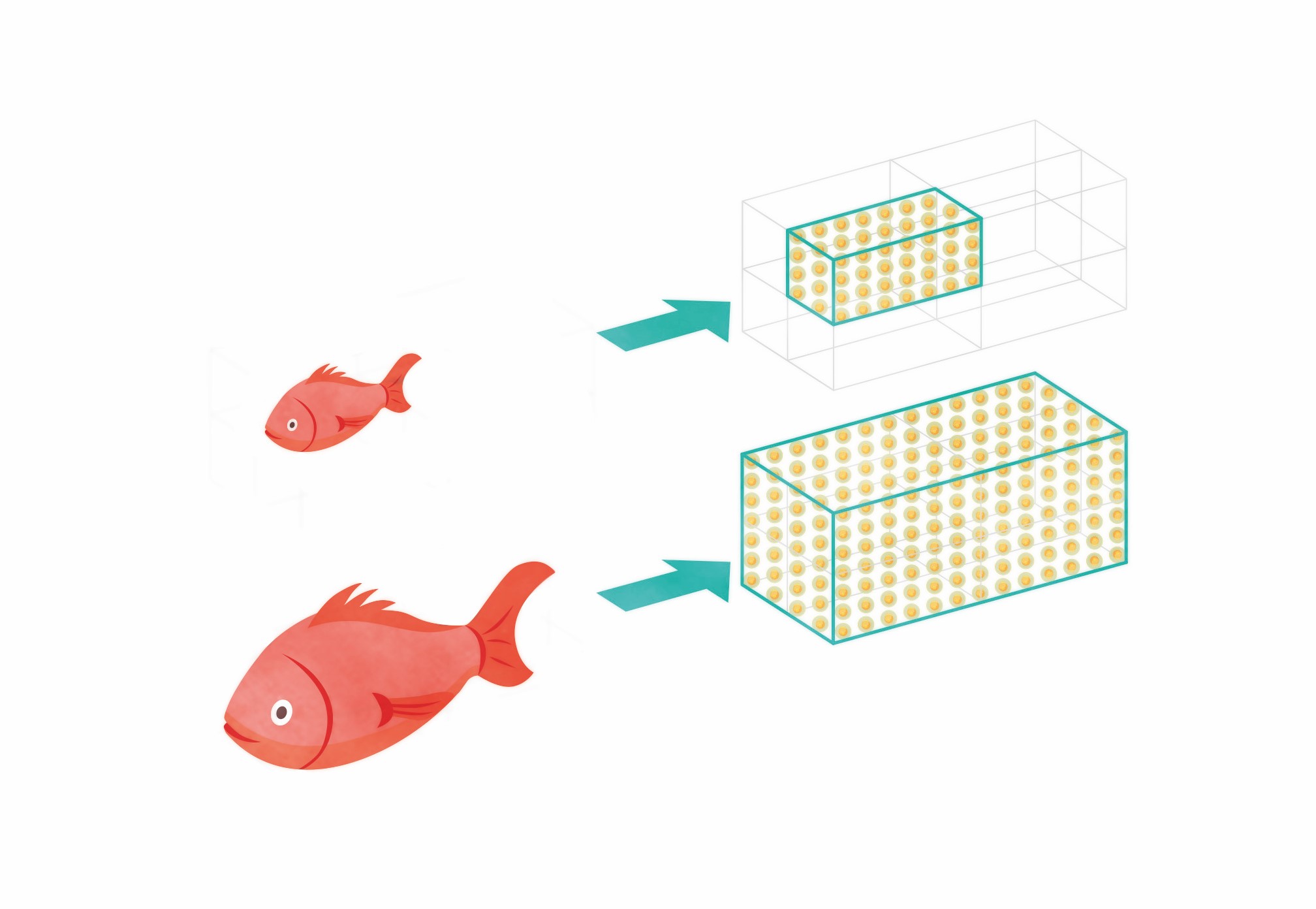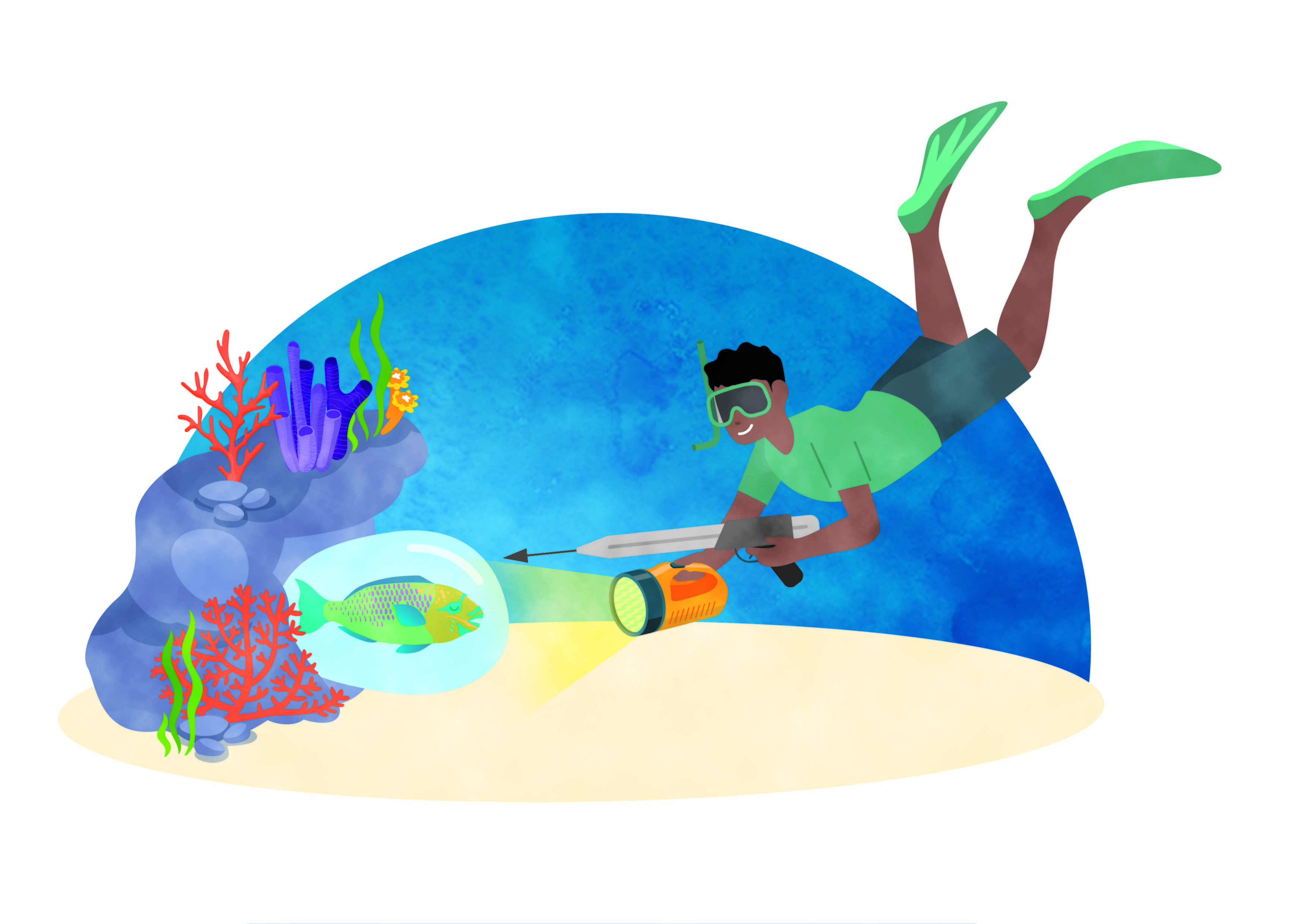What are size limits and species bans?
- Size limits are a fisheries management tool used to delimit the sizes at which fish or invertebrates can be caught.
- Species bans are a fisheries management tool that prohibits the catching and retaining of selected species.
What is the purpose of size limits and species bans?
The reason for the application of minimum size limits is to allow individual species to grow to a size at which they can spawn at least once before capture. Banning the catching of selected species is aimed at protecting those that are under threat or endangered, usually from excessive fishing.
(illustrations to be updated: species and sizes)
When and where should we use size limits and bans?
Size limits have been applied by fisheries departments or agencies in most Pacific Island countries and territories to a wide range of species of inshore pelagic fish, reef fish, sea cucumber, clam, trochus, green snail, crab and lobster. These size limits and bans should be publicised and respected by communities as well as commercial fishers.
Different countries may have different ways of measuring marine resources. Standard length measurements are shown in the accompanying figure for various groups of marine species. From left, clockwise: carapace length (CL) of a lobster; shell length (L) of a clam; and either total length (TL) or caudal fork length (CFL) of a fish.
Size limits and other coastal fisheries regulations in the Pacific region are summarised on the Reeflex webpage, hosted by SPC:
https://www.spc.int/CoastalFisheries/Legislation/
For some species, an upper size limit has been applied in addition to a minimum size limit. This is usually justified on the grounds that larger individuals produce a disproportionately greater number of eggs than smaller individuals.
The figure below shows a younger female fish. When a fish doubles in size - depth, width and length, its volume increases eight times; and as egg carrying capacity is related to volume, the number of eggs also potentially increases by eight.
Upper size limits may also be applied in cases where larger individuals are less marketable than smaller individuals. Large trochus shells, for example, which are often pitted due to a lifetime of parasitic attack, are of less use in the manufacture of pearl-shell buttons.

How do we implement size limits and bans?
Size limits
If fisheries departments or agencies are setting fishing regulations that are science-based and imposed with the best of intentions, it is in the interest of communities to support these regulations. Communities should raise local awareness of the need for size limits and bans and monitor catches made by community members.
Species bans
- Communities can implement bans on catching particular species that are overfished or vital for the health of reef areas. For example, parrotfish keep corals clear of algae, which would otherwise smother and die. In some communities, the introduction of underwater torches has allowed fishers to dive and spear parrotfish at night, while the fish sleep under coral ledges.

- The Convention on International Trade in Endangered Species of Wild Fauna and Flora (CITES) has established a worldwide system of controls on the international trade of some threatened marine species. Those of interest in Pacific Island countries and territories include: all species of giant clams (Tridacna), corals, all sharks and the humphead wrasse (Cheilinus undulatus); and some species of sea cucumbers (black teatfish, Holothuria whitmaei and white teatfish, Holothuria fuscogilva).
- Giant clams live in clear shallow water that make them particularly vulnerable and some species have disappeared from many Pacific Island countries and territories. Public awareness is needed to ensure that fishers are familiar with protected species.
What are the benefits, problems and limitations of size limits and bans?
The benefits of applying size limits and bans on threatened species are to ensure that populations of these marine species thrive and provide a continuing supply of seafood for the communities.
Size limits should be easily gauged
One of the problems of size limits is the difficulty communities face in determining the size of particular marine resources that are caught and harvested. In Fiji, the size limit of 3 cm on ark clams is allowed to be measured by using the fisher’s fingers.
Fish or invertebrates should not be harmed by the catching method
Minimum size limits are only applicable when the marine resources caught or harvested are not harmed by the catching method, such as molluscs gathered by hand, or crustaceans caught in traps. As speared undersize lobsters would not survive if released, fishers have become adept at judging their size to avoid spearing small individuals. Although some shallow-water, undersize fish caught on hooks may survive well if returned to the water immediately, this type of regulation is inappropriate to apply to fish such as deepwater snappers. The probability of fish surviving being hauled to the surface from deep water and released are small. The resulting reduction in pressure inflates swim bladders, keeping released fish afloat.
Not recommended for fish that change sex during their lives
The life history of tropical reef fishes can also complicate the use of minimum size limits. Many tropical reef fishes such as grouper and emperor change sex during their lives. In these species, the application of minimum sizes may concentrate fishing pressure on one sex. If males grow to a certain size before becoming larger females, most of the legally sized fish in the catch will be female. Some species of groupers, for example, grow to 3 kg before becoming female. On the other hand, some groupers, such as the coral trout, change from females to larger males. In this case, most of the total catch are likely to be males. The removal of too many males could result in an insufficient number of males to fertilise eggs during spawning. To overcome these problems, the implementation of maximum size limits may also be considered for some species.
How do we know if size limits and bans are working?
Communities should undertake surveys of the marine resources they catch and harvest to reveal if undersized fish and banned species are being caught. If they are, community members, with the support of their traditional leaders, should take locally appropriate action to reprimand offenders.
What other management actions can complement applying size limits and bans?
Protecting females bearing eggs is another way of maximising the contribution to the next generation. However, regulations protecting females can only be applied sensibly to species in which the sex can be distinguished easily by fishers and where the catching method does not harm the individuals caught. The sex of most fish cannot be determined by external examination, and other regulations, such as the application of closed seasons during the spawning period, may have to be considered as alternatives.

spawning season bans (temporary closures)
In most crustaceans, the sex is easily distinguishable, and regulations making it illegal to capture and keep lobsters and crabs bearing eggs can be put in place.

